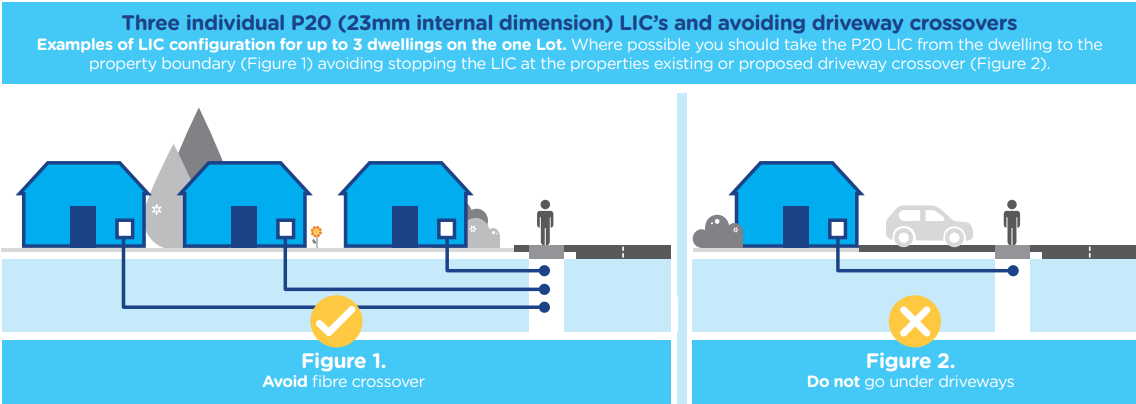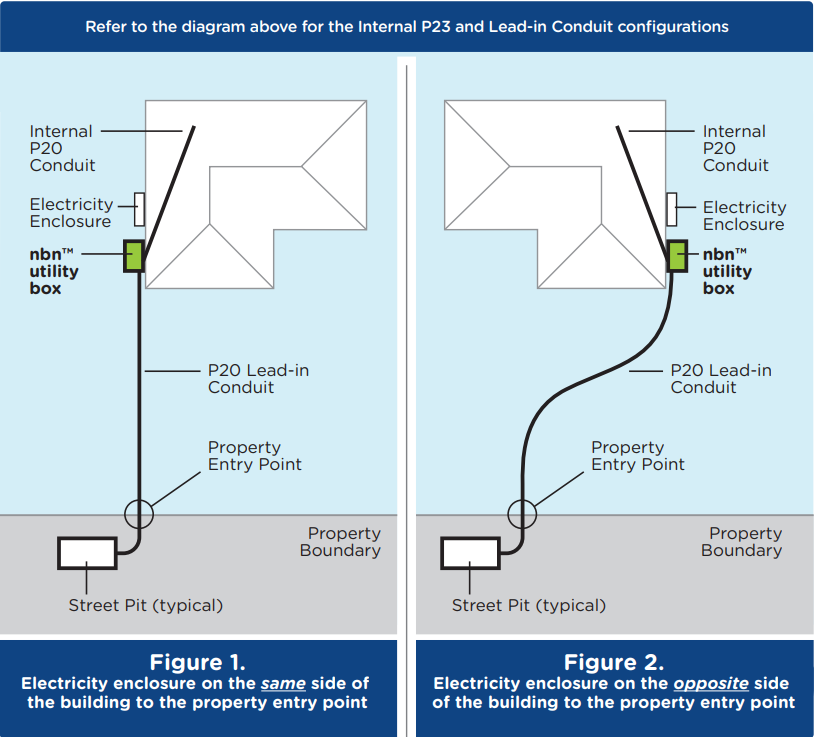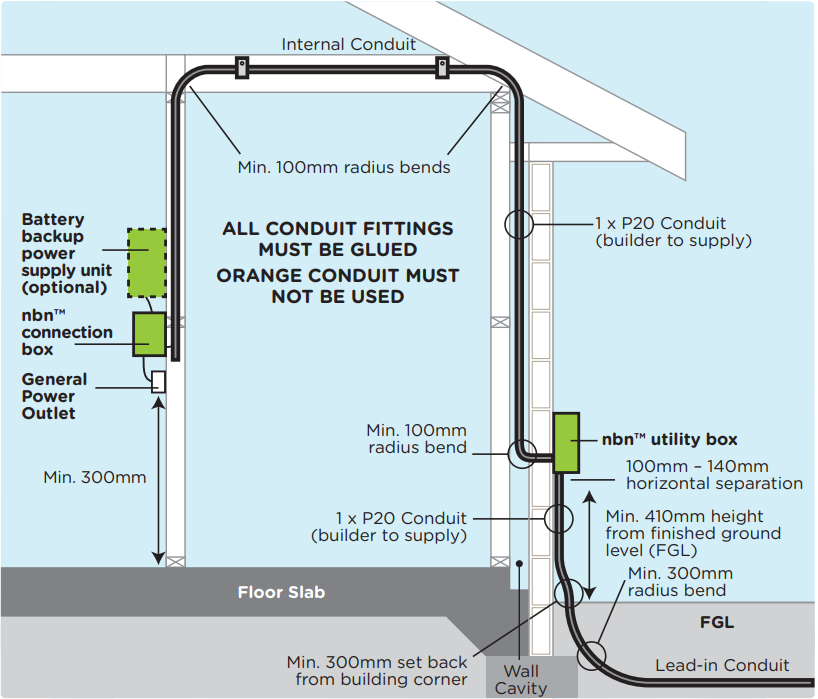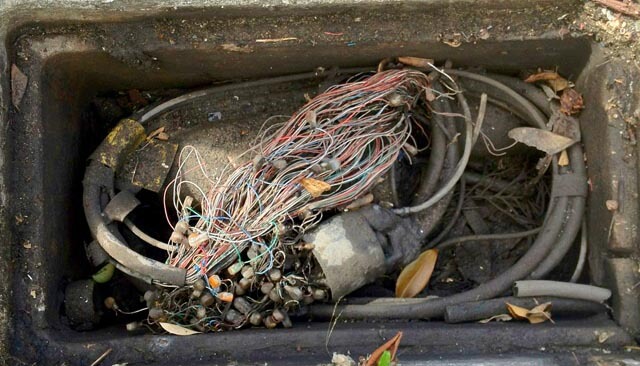A Comprehensive Guide to Lead-in Conduit Installation
If you’re looking for a done-for-you lead-in cable installation service.
If you have been told that you need to provide an NBN lead-in conduit so you can connect to the NBN then this guide should help you understand just what your responsibilities are. We are one of Sydney’s top lead-in conduit lead-In installation services. We have installed plenty of these conduits and cables over the years. So we can offer you the right advice that will help you get your NBN service installed quickly and done the right way. If you want an expert company to help with this installation process get in touch on 02 9188 1577 or you can book a lead-In inspection now. We will come to your property and do all the hard work for you.
Preparing Your Property for a NBN Conduit Installation
What is the NBN™ Network?
The NBN™ network is Australia’s ambitious project to provide fast and dependable internet access across the nation. It’s a critical part of modern infrastructure, connecting homes and businesses like never before.
Why This Guide?
This guide aims to demystify the process of NBN lead-in conduit (LIC) installation. It’s tailored for homeowners, builders, and developers, offering a step-by-step approach to ensure a seamless connection to the NBN™ network. You can download your free NBN preparation checklist here.
Lead-in Conduit (LIC) Pre-Construction
Adhering to Design Standards
Digging the Right Trench
Create an appropriate trench from your home to the property’s edge, steering clear of areas where driveways intersect. The boundry point for this is in line with your letter box.
Keeping the Correct Depth
Ensure a depth of 300mm in open areas and 450mm beneath driveways from the conduit’s top to the ground level. This will ensure that damage in the future will be much harder, and keep your cable safe.
Using the Proper Conduit
Utilise a specific P20 White Telecommunications Conduit with a 23mm Internal Diameter for the LIC installation.
Guidelines for Bends, Joints, and Caps
- Bends: Limit to 2 pre-formed bends with a 300mm radius.
- Joints: Adhere to the manufacturer’s guidelines for gluing.
- Stringing and Caps: String the P20 LIC and cap both ends to keep out debris.
Where to Place the LIC
If feasible, align the LIC with existing telecommunications infrastructure. NBN oversees connections from the boundary to existing pits. But it is your responsibility to have to conduit installed to the boundary.
Installing Internal Conduit
A corresponding P20 White Telecommunications Conduit must connect the external and internal NBN™ utility boxes. If you have FTTP then you will need to have another conduit that runs from the utility box to the location of the NTD inside your home or office. If you are having FTTN, FTTC, HFC connection then you will need a conduit only for mechanical protection on the outside of your home. Once the copper cable is under the house or inside the ceiling or cavity it can be run naked.
Safety Considerations
Hire Qualified Professionals
Only qualified individuals should handle LIC installation to ensure safety and proper alignment with existing utility services. It’s very important to have a professional do your NBN lead-In conduit installation. If you spend money on a substandard installer and they don’t follow the rules and guidelines, then NBN may reject your connection, and it will end up costing you much more to have it redone again correctly. So get it done right the first time.
We are one of the top contracting companies here in Sydney and have never had an installation rejected. If you would like to book an on-site lead-in cable inspection so we can assess what is needed to have your lead-in conduit installed right the first time, then you can book our service here.

Additional Insights
Before You Dig, Call
Use the Dial Before You Dig service at 1100 or online to locate the nearest pit.
Requirements for External Cabling
Three separate P20 LICs are needed, and driveway crossovers must be avoided.
Visual Aids
The original document includes illustrations and examples for different property configurations.
Who’s Responsible?
NBN takes charge if the pit is across the road, connecting the conduit from the pit to the LIC.

Supplying Internal and External Conduit Paths
Conduit Requirements
- Material: Utilise rigid white nominal P20 telecommunications conduits with a 23mm Internal Diameter.
- Gluing: All joints must be securely glued with solvent cement.
- Straightness: Conduits should be as straight as possible for optimal performance.
- Drawstrings: Include drawstrings in both conduits for future cable installations.
- Securing: Affix conduits firmly using appropriate saddles or similar devices.
- PowerPoint: Ensure a power point within 1500mm of the NBN™ connection box.
- Bend Radius: Maintain a minimum bend radius of 100mm for internal conduits and 300mm for street conduits.
- Separations: Keep at least 250mm away from other services like electricity, gas, or water meters, and 1.5m from gas cylinders.
- Set Back: Allow a minimum 300mm setback from building corners.
- Height: Ensure a minimum height of 410mm from the finished ground level.
- Download Guide For FTTP: Key information for developers and builders

NBN to Supply
The NBN will provide the following:
- P20 service drop conduit from pit to property.
- NBN™ connection box.
- Connection box with battery backup (if required).
- All necessary fibre optic cables.
- Service drop cable to the utility box.
- Internal fibre optic cable from the utility box to the connection box.
- NBN™ utility box.
Other Considerations
Installation Guidelines
- Bends: No more than 3 x 90° (max) bends between draw points.
- Gluing: All conduit fittings must be glued.
- Prohibited Materials: Orange conduit is not to be used.

NBN Supplied Equipment
Inside and Outside Premises
- Utility Box: Also referred to as the Premises Connection Device.
- Connection Box: Also known as the Network Termination Device.
- Battery Backup Power Supply Unit: Optional and for indoor installation only.
Preparing New Developments
Communication
Builders and cablers must engage with new homeowners about their desired telecommunications services and guide them on equipment locations.
Pre-Installation
To facilitate a smooth connection, builders/developers can request pre-installation of supplied equipment at least 20 days before the estimated home completion date. Visit the NBN website for the pre-installation request.
Conclusion
Summary
This section has outlined the vital information for developers and builders preparing for Fibre to the Premises (FTTP) connections. From conduit requirements to pre-installation procedures, these guidelines are essential for a successful NBN™ connection.
Importance of Compliance
Adhering to these guidelines is paramount to avoid unnecessary delays and additional costs. Compliance ensures a streamlined process, reflecting professionalism and commitment to quality.

Jason Kearney
Head Internet Technician
Jason Kearney is the Head Technician at SECURE A COM, with qualifications spanning NBN, ADSL, phone, and data cabling. Starting as an electrician, Jason quickly delved into the telecommunications sector, leading crucial projects like the rehabilitation of the Telstra network. With credentials in both managerial and technical aspects, he now specialises in phone line and NBN fault location and repair, serving both homes and businesses with effective and personalised telecommunications solutions
More Internet Solutions

TELSTRA COMPLAINTS | FAULTS IN THE TELSTRA NETWORK



